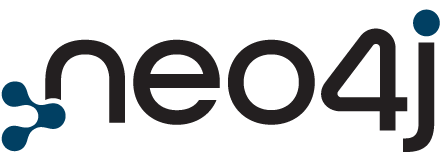DBMS > Google Cloud Spanner vs. MySQL vs. Oracle Berkeley DB
System Properties Comparison Google Cloud Spanner vs. MySQL vs. Oracle Berkeley DB
Please select another system to include it in the comparison.
| Editorial information provided by DB-Engines | ||||||||||||||||||||||||||||||||||||||||||||||||||||||||||||||||||||||||||||||||||||||||||||||||||
| Name | Google Cloud Spanner Xexclude from comparison | MySQL Xexclude from comparison | Oracle Berkeley DB Xexclude from comparison | |||||||||||||||||||||||||||||||||||||||||||||||||||||||||||||||||||||||||||||||||||||||||||||||
| Description | A horizontally scalable, globally consistent, relational database service. It is the externalization of the core Google database that runs the biggest aspects of Google, like Ads and Google Play. | Widely used open source RDBMS | Widely used in-process key-value store | |||||||||||||||||||||||||||||||||||||||||||||||||||||||||||||||||||||||||||||||||||||||||||||||
| Primary database model | Relational DBMS | Relational DBMS | Key-value store Native XML DBMS | |||||||||||||||||||||||||||||||||||||||||||||||||||||||||||||||||||||||||||||||||||||||||||||||
| Secondary database models | Document store Spatial DBMS | |||||||||||||||||||||||||||||||||||||||||||||||||||||||||||||||||||||||||||||||||||||||||||||||||
|
|
|
| |||||||||||||||||||||||||||||||||||||||||||||||||||||||||||||||||||||||||||||||||||||||||||||||
| Website | cloud.google.com/spanner | www.mysql.com | www.oracle.com/database/technologies/related/berkeleydb.html | |||||||||||||||||||||||||||||||||||||||||||||||||||||||||||||||||||||||||||||||||||||||||||||||
| Technical documentation | cloud.google.com/spanner/docs | dev.mysql.com/doc | docs.oracle.com/cd/E17076_05/html/index.html | |||||||||||||||||||||||||||||||||||||||||||||||||||||||||||||||||||||||||||||||||||||||||||||||
| Developer | Oracle | Oracle | ||||||||||||||||||||||||||||||||||||||||||||||||||||||||||||||||||||||||||||||||||||||||||||||||
| Initial release | 2017 | 1995 | 1994 | |||||||||||||||||||||||||||||||||||||||||||||||||||||||||||||||||||||||||||||||||||||||||||||||
| Current release | 9.0.0, July 2024 | 18.1.40, May 2020 | ||||||||||||||||||||||||||||||||||||||||||||||||||||||||||||||||||||||||||||||||||||||||||||||||
| License | commercial | Open Source | Open Source | |||||||||||||||||||||||||||||||||||||||||||||||||||||||||||||||||||||||||||||||||||||||||||||||
| Cloud-based only | yes | no | no | |||||||||||||||||||||||||||||||||||||||||||||||||||||||||||||||||||||||||||||||||||||||||||||||
| DBaaS offerings (sponsored links) Providers of DBaaS offerings, please contact us to be listed. | ||||||||||||||||||||||||||||||||||||||||||||||||||||||||||||||||||||||||||||||||||||||||||||||||||
| Implementation language | C and C++ | C, Java, C++ (depending on the Berkeley DB edition) | ||||||||||||||||||||||||||||||||||||||||||||||||||||||||||||||||||||||||||||||||||||||||||||||||
| Server operating systems | hosted | FreeBSD Linux OS X Solaris Windows | AIX Android FreeBSD iOS Linux OS X Solaris VxWorks Windows | |||||||||||||||||||||||||||||||||||||||||||||||||||||||||||||||||||||||||||||||||||||||||||||||
| Data scheme | yes | yes | schema-free | |||||||||||||||||||||||||||||||||||||||||||||||||||||||||||||||||||||||||||||||||||||||||||||||
| Typing | yes | yes | no | |||||||||||||||||||||||||||||||||||||||||||||||||||||||||||||||||||||||||||||||||||||||||||||||
| XML support | no | yes | yes | |||||||||||||||||||||||||||||||||||||||||||||||||||||||||||||||||||||||||||||||||||||||||||||||
| Secondary indexes | yes | yes | yes | |||||||||||||||||||||||||||||||||||||||||||||||||||||||||||||||||||||||||||||||||||||||||||||||
| SQL | yes | yes | yes | |||||||||||||||||||||||||||||||||||||||||||||||||||||||||||||||||||||||||||||||||||||||||||||||
| APIs and other access methods | gRPC (using protocol buffers) API JDBC RESTful HTTP API | ADO.NET JDBC ODBC Proprietary native API | ||||||||||||||||||||||||||||||||||||||||||||||||||||||||||||||||||||||||||||||||||||||||||||||||
| Supported programming languages | Go Java JavaScript (Node.js) Python | Ada C C# C++ D Delphi Eiffel Erlang Haskell Java JavaScript (Node.js) Objective-C OCaml Perl PHP Python Ruby Scheme Tcl | .Net others C C# C++ Java JavaScript (Node.js) Perl Python Tcl | |||||||||||||||||||||||||||||||||||||||||||||||||||||||||||||||||||||||||||||||||||||||||||||||
| Server-side scripts | no | yes | no | |||||||||||||||||||||||||||||||||||||||||||||||||||||||||||||||||||||||||||||||||||||||||||||||
| Triggers | no | yes | yes | |||||||||||||||||||||||||||||||||||||||||||||||||||||||||||||||||||||||||||||||||||||||||||||||
| Partitioning methods | Sharding | horizontal partitioning, sharding with MySQL Cluster or MySQL Fabric | none | |||||||||||||||||||||||||||||||||||||||||||||||||||||||||||||||||||||||||||||||||||||||||||||||
| Replication methods | Multi-source replication with 3 replicas for regional instances. | Multi-source replication Source-replica replication | Source-replica replication | |||||||||||||||||||||||||||||||||||||||||||||||||||||||||||||||||||||||||||||||||||||||||||||||
| MapReduce | yes | no | no | |||||||||||||||||||||||||||||||||||||||||||||||||||||||||||||||||||||||||||||||||||||||||||||||
| Consistency concepts | Immediate Consistency | Immediate Consistency | ||||||||||||||||||||||||||||||||||||||||||||||||||||||||||||||||||||||||||||||||||||||||||||||||
| Foreign keys | yes | yes | no | |||||||||||||||||||||||||||||||||||||||||||||||||||||||||||||||||||||||||||||||||||||||||||||||
| Transaction concepts | ACID | ACID | ACID | |||||||||||||||||||||||||||||||||||||||||||||||||||||||||||||||||||||||||||||||||||||||||||||||
| Concurrency | yes | yes | ||||||||||||||||||||||||||||||||||||||||||||||||||||||||||||||||||||||||||||||||||||||||||||||||
| Durability | yes | yes | yes | |||||||||||||||||||||||||||||||||||||||||||||||||||||||||||||||||||||||||||||||||||||||||||||||
| In-memory capabilities | no | yes | yes | |||||||||||||||||||||||||||||||||||||||||||||||||||||||||||||||||||||||||||||||||||||||||||||||
| User concepts | Access rights for users, groups and roles based on Google Cloud Identity and Access Management (IAM) | Users with fine-grained authorization concept | no | |||||||||||||||||||||||||||||||||||||||||||||||||||||||||||||||||||||||||||||||||||||||||||||||
More information provided by the system vendorWe invite representatives of system vendors to contact us for updating and extending the system information, | ||||||||||||||||||||||||||||||||||||||||||||||||||||||||||||||||||||||||||||||||||||||||||||||||||
Related products and servicesWe invite representatives of vendors of related products to contact us for presenting information about their offerings here. | ||||||||||||||||||||||||||||||||||||||||||||||||||||||||||||||||||||||||||||||||||||||||||||||||||
| More resources | ||||||||||||||||||||||||||||||||||||||||||||||||||||||||||||||||||||||||||||||||||||||||||||||||||
| Google Cloud Spanner | MySQL | Oracle Berkeley DB | ||||||||||||||||||||||||||||||||||||||||||||||||||||||||||||||||||||||||||||||||||||||||||||||||
| DB-Engines blog posts | MySQL is the DBMS of the Year 2019 MariaDB strengthens its position in the open source RDBMS market The struggle for the hegemony in Oracle's database empire | |||||||||||||||||||||||||||||||||||||||||||||||||||||||||||||||||||||||||||||||||||||||||||||||||
| Recent citations in the news | Google Cloud Introduces HDD Tier for Spanner Database, Cutting Cold Storage Costs by 80% New features make Google's Spanner a database for AI Google Cloud Spanner gets dual-region configuration option Google Cloud adds graph and vector search features to Spanner database Google Releases Spanner Graph into General Availability provided by Google News | Scaling Amazon RDS for MySQL performance for Careem’s digital platform on AWS MySQL at 30: Still important but no longer king 30 years of MySQL, the database that changed the world MySQL Explained: Your Guide to Mastering This Powerful Database Continuent Releases Tungsten Dashboard v8, an Upgrade to Its Web-Based Interface for Managing and Monitoring MySQL Clusters provided by Google News | Database Trends Report: SQL Beats NoSQL, MySQL Most Popular Which Are the Top Local Databases for React Native A complete beginners guide to installing a Bitcoin Full Node on Linux (2018 Edition) Fig. 2. XML Methods for Various XML DBMS Types Margo I. Seltzer provided by Google News | |||||||||||||||||||||||||||||||||||||||||||||||||||||||||||||||||||||||||||||||||||||||||||||||
Share this page




